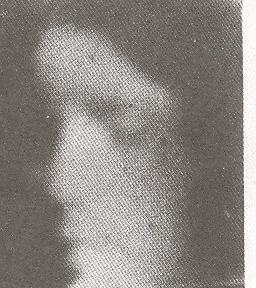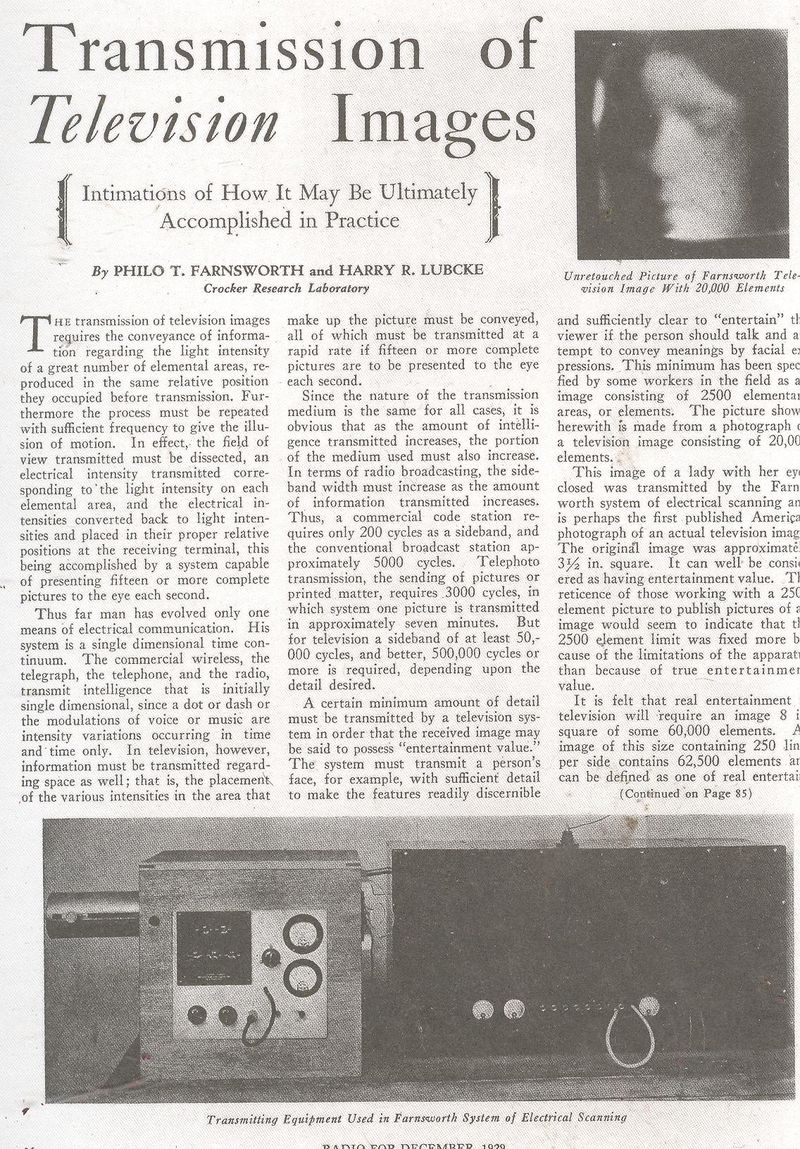JF Ptak Science Books Post 1024

[I’ve written a number of posts on understatement here on this blog; two dozen or so will pop up when you put “understatement” in the google site search at left.]*
Philo T. Farnsworth (1906-1971) may have had the best name among the earliest inventors of electronic1 television, but he didn’t necessarily have the best invention, this in spite of the fact that it is he who is remembered and counted as the technical inventor of the medium. But that’s the way it goes, sometimes; sometimes it goes that way. Farnsworth2 also had the better back-story: he was a teenager, brilliant of course, working out in the comparative middle-of-nowhere with little bits of money here and there from local investors. On the other side of the coin was Vladimir Zworykin3 (1888-1982) who invented a cathode ray tube system for transmitting and receiving televised images, and who had the enormous financial support of Westinghouse (and then, later, RCA). Farnsworth was first off the boat, but Zworykin is the one whose work became the industry standard.
But the understatement is what attracts me here, and it occurs in the December 1929 issue of Radio magazine in which he reports on his successful first demonstration of his device to the general public. I can’t tell if he was being very deliberate in his understatement or if was simply a staccato expression by a very young engineer with not-great writing abilities–I think that it was the later, really, as the statement is sandwiched in an odd, non-congruent section of its paragraph.

In the article, Farnsworth also publishes the first (?) photograph of the first televised image, and states:
“This image of a lady with her eyes closed was transmitted by the Farnsworth system of electrical scanning and is perhaps the first published American photograph of an actual television image. The original image was approximately 3 ½ in. square. It can well be considered as having entertainment value. The reticence of those working with a 2500 element limit was fixed more because of the limitations of the apparatus than because of true entertainment value.”
I do think that Farnsworth was in a hurry to get to the end of the article. Later on he did try to capitalize in a major way on his invention and its distribution, but things didn't work out so well.
Notes:
* Some other great understatements in the history of science and technology include:
-the Wright brothers’ telegram to their father on the successful flight at Kitty Hawk, telling him to “inform Press” [sic], and misspelling Orville (“Orvelle”)
--the announcement of the invention of the telephone, giving Mr. Bell a scant 200-word mention in the London-based journal Nature.
--the alpha and omega element of the severe understatement of George Gamow on discovering the background radiation of the Big Bang.
--and the atomic bomb/nuclear Armageddon bit from the National Emergency Planning Council: ( “Because of recent changes in the technology and potential tempo of war and because of the base power of force is in being (including equipment and supplies), there is general recognition that any future war in which the United States is engaged, especially if it is an unlimited nuclear war, may be decided without significant additional military demands upon the nation’s industrial economy.” Hmm. He continues: “That is not to say, however, that the post-attack economy would not face enormous logistical support problems.” There is no human element of this equation. “The logistic requirements of survival and recovery would present very heavy demands.”)
1. Early on there were mechanical approaches to the invention of television.
2. He was the inventor of the first functional all-electronic image pickup device (the so-called "image dissector") and also provided the first television system. He was also the first to display his functioning systerm to the general public. He also started to work on replacing the mechanical-option television with electronics in 1921 at the age of 14.
3. Zworykin’s first patent for his idea,"Television Systems", was filed on December 29, 1923.



Comments